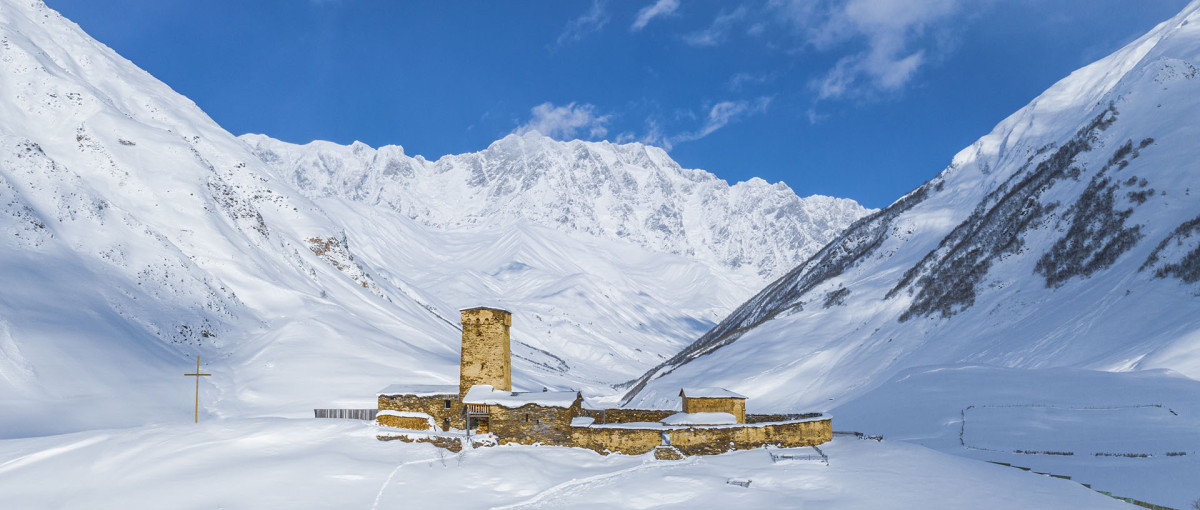
Mestia
Margiani's House Museum



On August 28, Georgia celebrates Mariamoba - the Assumption of the Blessed Virgin Mary. The holiday tradition is special in Svaneti. Mariamoba is called Limrieoba by Svans, which is celebrated in Limrie church, one of the most important places in the Ushguli community. Today, the temple is the episcopal residence of Mestia and Zemo Svaneti.
In ancient times, Limrie, like the other Svan goddess festivals, was celebrated during the New Year and early spring. In her name, the housekeeper kept the flour of the best grain in a special ark, which was used during the Limrie cult. For example, on the night of Shushkhvami - one of the holidays of the New Year cycle, a special, disc-shaped bread roll with a hole in the middle was baked, which was intended for the well-being of family members and hung above the hearth until the end of the year.
The spring day - Lilashune-Tesloba - was named after Limrie. On this day, they baked the bull and plow image cubes, arranged them on a table or a special round bread roll, so-called Kalo, and were sacrificed to Limrie. In addition, the flag Lem, or lion, according to one version of the story, was gifted to the Swans by Limrie - Great Mother, whose attribute was this animal.
Even today, traditionally, a lot of people gather together with the locals at the Feast of Mariamoba in Svaneti. It is true that Limriya is no longer celebrated as it used to be, however, praying at the Ushguli temple, dancing and singing, and feasting on the table are essential attributes of Limriya.
In the past, Limrie was called the Svan goddess of grain, fertility, dairy cattle, and handicrafts. Her cult emerged as a result of the fusion of ancient agricultural goddesses and the cult of the Christian Virgin Mary. Then, under the influence of Christianity, the old name of the goddess disappeared and was replaced by the name of Mary. At this time, Limrie acquired the status of the patron of motherhood, although the main function is still grain abundance. According to the Swans, Limrie was the last deity in the pantheon of deities.
Limrie of Ushguli is a monument with high cultural-historical value. It is a church named after the Mother of God and is located on a high hill in the Ushguli community of the Mestia municipality, north of the village of Zhibiani in Svaneti.
The church was built outside the village, surrounded by a fence and fortified with a tower. It is a basilica-type building of the 9th-10th centuries, with a gabled apse. The church has an entrance from the west, and the chapel has an entrance from the southwest. The pillar is made of stone, the arches of which are supported by stone columns, starting from the floor and decorated with plain capitals. Icons are stored in the vaults.
Several layers of painting have been preserved in the church. Initially, immediately after the construction of the church, only the pillar was painted. At the end of the 10th century and the beginning of the 11th century, narrative images of the interior were added, fragments of which can be seen under the later layers of painting. The composition of the crucifix placed on the northern wall is worth noting, where the hands of the figures are enlarged in order to emphasize the gesturing of the figures. The faces are also expressive, the features of which already show the specific type characteristic of Svaneti painting.
The next layer of painting is from the 12th century. The images of holy warriors, George and Theodore on the western wall belong to this stage. The church was last painted in the 13th century. The painting of the apse is from this period. The arc presents a composition of traditional prayers for Svaneti. Fathers of the Church are depicted on the altar wall, and the Nativity and Transfiguration are depicted in the sky of the church itself. Scratched inscriptions of historical significance, scratched by worshipers who came to the church, are also worth noting. The inscriptions are made in Asomatruli, Nuskhuri, transitional Mkhedruli, and Mkhedruli.
When looking at the paintings, it is worth noting the composition of the crucifixion placed on the northern wall. Figures are distinguished by special expressiveness. In particular, their gestures and facial features, are characteristic of Svaneti painting. Unlike traditional iconography, in the image of the Mother of God, her hand is not on her cheek, but on her head, expressing a gesture of sorrow. Similar details taken from Svan's everyday life can be found in other cultural monuments.
Please login to add a review